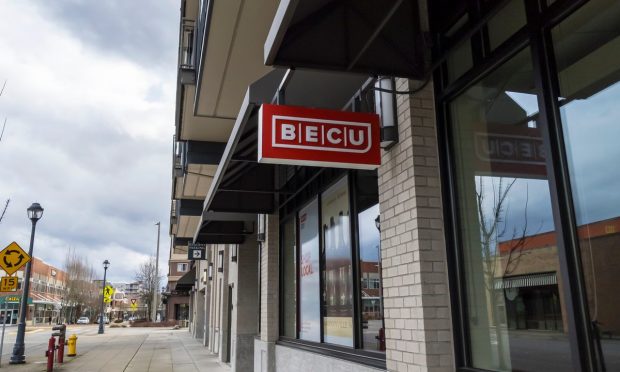BECU On The Changing Strategies For Credit Union Branches

The pandemic may have dramatically shifted the status quo from branch-based banking toward digital-first alternatives, but plenty of demand for in-person service at credit unions (CUs) remains.
Some of the nation’s financial institutions (FIs) have reported that up to 70 percent of deposits have moved to self-service channels, and a survey from late last year found that 55 percent of customers expect to visit bank branches less, and more than 25 percent plan to avoid face-to-face interactions. This change in consumer behavior has required banks and CUs to reexamine how to serve customers and maximize engagement.
The global health crisis accelerated digital banking technologies’ adoption, causing many executives to question the future need for branch networks. The number of bank branches in the U.S. fell to 79,974 by the end of 2020 after peaking at almost 100,000 in 2009, yet the total number of CU branches grew slightly to 21,566 in 2020, up from 21,440 in 2009. BECU, founded in 1935 by 18 Boeing employees, is one CU that has seen an advantage in opening branches. The Washington-based CU has built 16 new branches since 2016 and has a member base of nearly 1.1 million.
“We started in a position of strength with our physical footprint,” Travis Simpson, BECU senior vice president of contact centers and wealth, told PYMNTS. “It’s been nimble, with a highly visible set of locations that serve the communities in which they operate.”
In what has turned out to be a visionary decision, only two of BECU’s 60 branches have tellers. They are instead staffed with consultants who provide advice on mortgages and other financial products as well as investment services to members and small businesses. Most routine banking is performed online or by app, Simpson explained.
“It feels to me like the way we entered the pandemic and how we’ve emerged or continue to move through it might be more appropriate,” Simpson said. “We’re able to connect and serve our members and are even better positioned for the future.”
Shifting Onboarding Processes and Member Interactions
The pandemic caused BECU to encourage appointments before visiting branches, and Simpson stated that a 400 percent increase in member appointments occurred as a result. The increased traffic at branches was managed with mandated local capacity limits, he said, adding that most of these in-person sessions are members of all ages seeking financial advice.
Another shift has been the move to self-service onboarding via digital-first banking tools. Simpson said the CU continues to fine-tune digital onboarding without requiring a branch visit. Online applications for checking and savings accounts at BECU have been available for several years.
“I think this continual focus on our capability will be important,” he said. “… There are some pretty significant enhancements that will go live later this year that we’re pretty proud of, but I don’t want to let that cat out of the bag.”
While declining to provide specifics, Simpson said BECU uses myriad technologies to authenticate applicants, although most new members are able to onboard easily.
Members Want More Branches
One request that came from BECU members through the CU’s net promoter score is that they want more branches.
“There’s always that one community that would like us to have an extra branch, so I think that’s generally one of the [more] consistent themes, and [one] we see is an opportunity,” he said.
One tool BECU does not plan to adopt is interactive teller machines, ATMs that offer the option of a teller on video, although Simpson acknowledged that BECU is keeping an eye on further developments.
“We don’t feel like we need to have it,” he said. “But as those technologies emerge, we’ll continue to look to see if something makes sense for BECU.”
